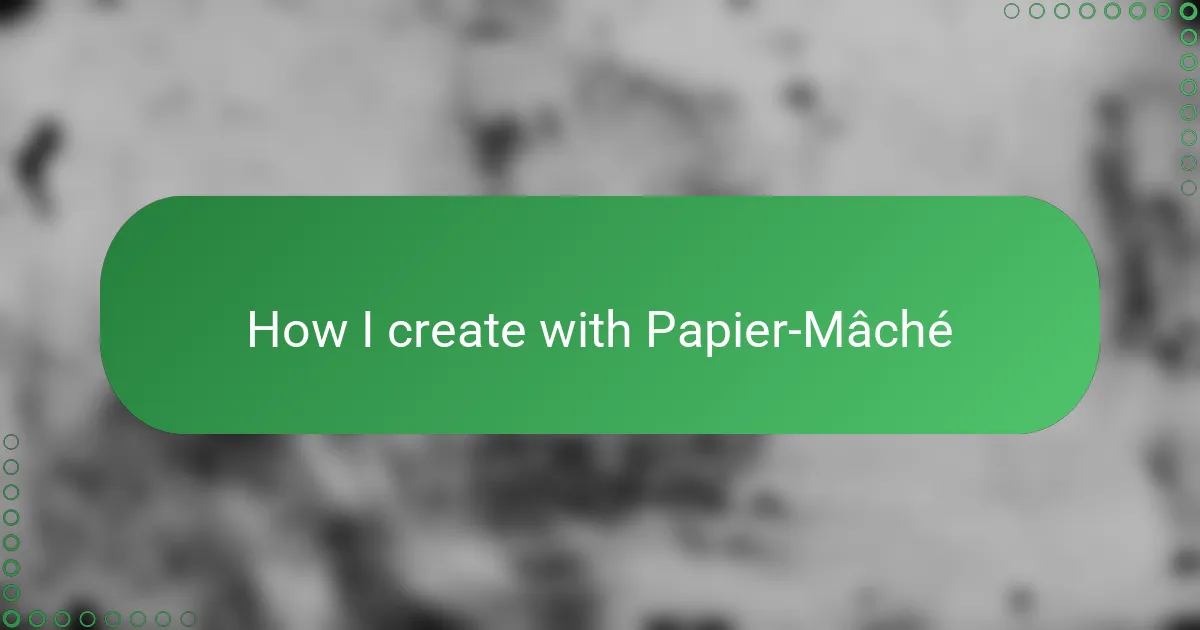Key takeaways
- Papier-mâché involves layering strips of paper with glue or paste to create durable, sculptural forms.
- Key materials include newspaper, flour, and water, with potential additions like white glue and acrylic paint for enhanced finish and durability.
- Proper technique includes ensuring each layer dries fully and maintaining a clean workspace to prevent mess and enhance focus.
- Creative projects can range from personalized masks to functional decorative bowls, encouraging both utility and artistic expression.
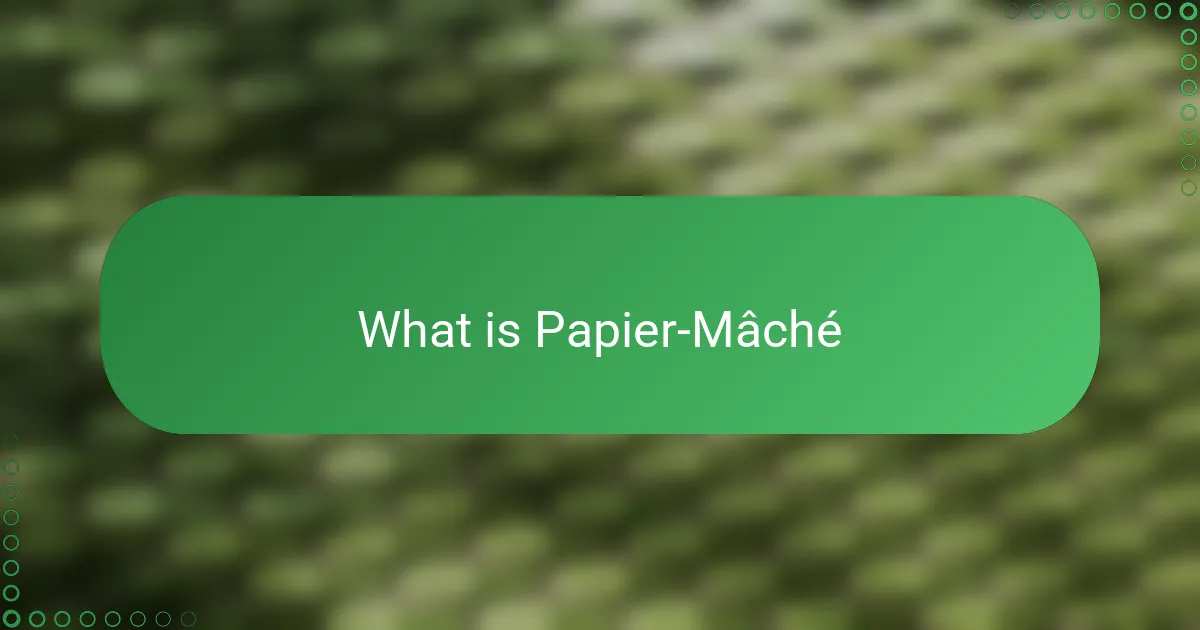
What is Papier-Mâché
Papier-mâché is a fascinating craft technique that involves layering strips of paper soaked in glue or paste to create solid, sculptural forms. I remember the first time I tried it; the transformation from flimsy paper to a sturdy, three-dimensional object felt almost magical. Have you ever thought about how simple materials like newspaper and flour can become striking decorations or playful masks?
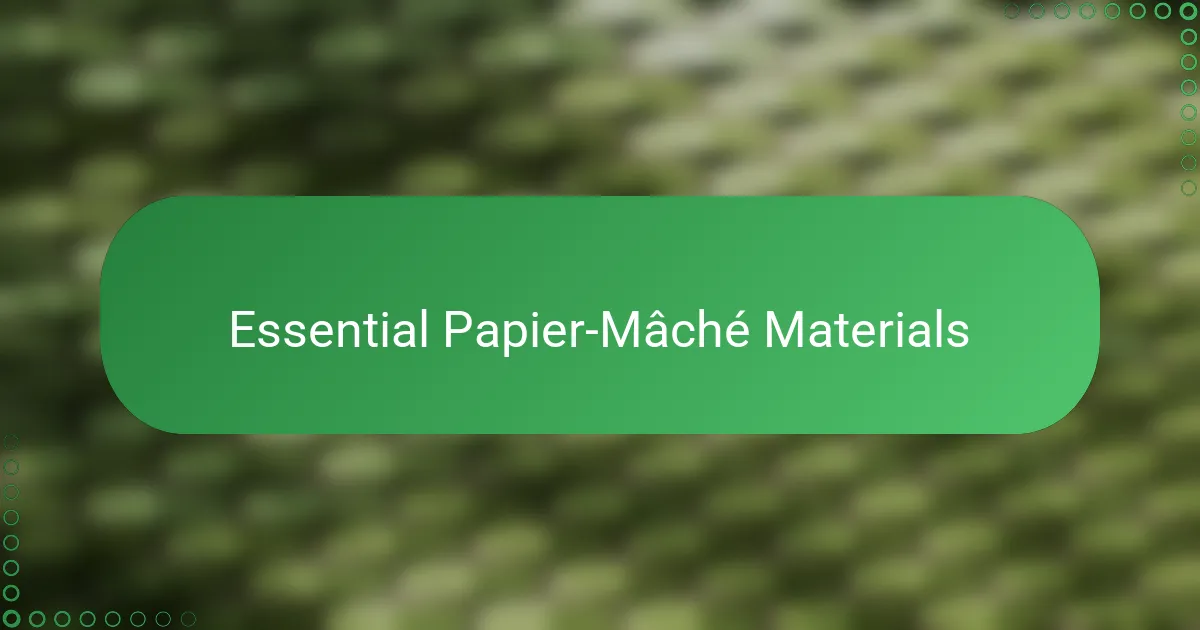
Essential Papier-Mâché Materials
When I gather my materials for papier-mâché, the basics are always newspaper, flour, and water. It’s amazing how these humble items, which you likely already have at home, can become the foundation of something so creative. Have you ever noticed how tearing newspaper into strips feels almost therapeutic before those pieces get dipped and molded?
I also keep a few extra items handy, like white glue for a smoother finish and sometimes acrylic paint to bring my projects to life. From experience, these small additions make a huge difference when you want your creation to pop with color or last longer. Isn’t it satisfying to see your papier-mâché piece go from fragile to fully vibrant?
One thing I’ve learned is the importance of patience with your paste mixture—it needs to be just thick enough to hold the pieces together without becoming too gluey. Mixing the right consistency is a bit like cooking; a little tweak changes everything. Have you ever tried different recipes to get that perfect blend of stickiness and ease? I find that experimenting here is part of the fun.
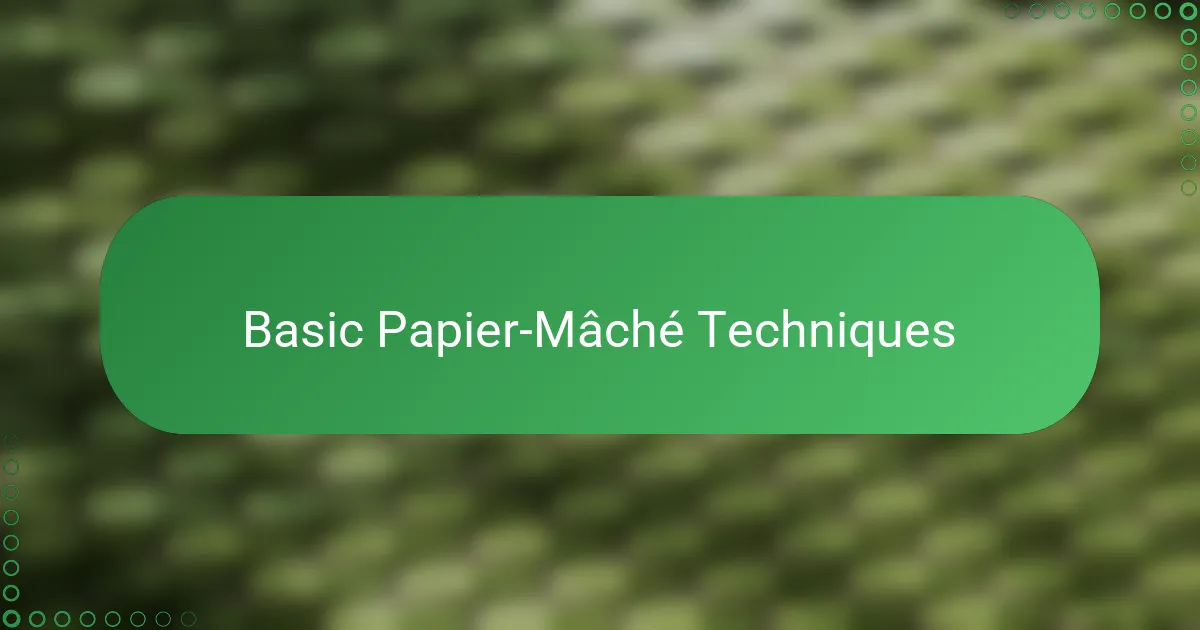
Basic Papier-Mâché Techniques
Getting the layering technique right is key to creating strong papier-mâché forms. I usually dip each paper strip into the paste, then gently smooth it onto my base, making sure there aren’t any air bubbles or wrinkles. Have you noticed how those overlapping layers start to feel surprisingly sturdy, almost like building little walls with paper?
Another technique I rely on is letting each layer dry fully before adding the next. It tests your patience, I admit, but this step prevents lumps and cracking later on. I remember once rushing through a project and regretting it when the whole thing cracked apart—I’ve never made that mistake twice!
Shaping your piece can be as simple or complex as you want. I often use balloons or crumpled paper as molds to guide the shape, then build up layers around them. Have you ever surprised yourself by transforming everyday objects into the skeleton of a papier-mâché sculpture? That moment is always oddly satisfying to me.
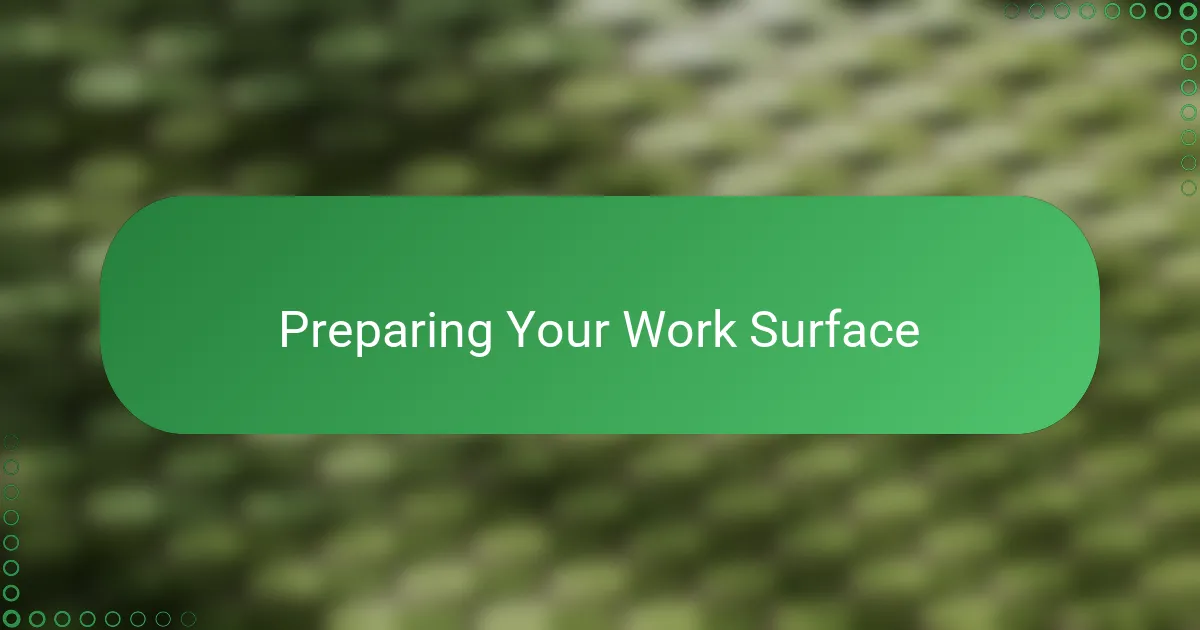
Preparing Your Work Surface
Before I start any papier-mâché project, I always make sure my work surface is perfectly prepped. It might seem like a small step, but covering the area with old newspapers or a plastic sheet saves me so much cleanup time later on—and honestly, it helps me focus more on creating rather than worrying about mess.
I remember one time, I skipped this step to save a few minutes, and ended up with glue stains on my favorite table. That taught me to never underestimate the power of protection. Do you have a spot in your home that’s dedicated to crafting? If not, finding one can make your crafting sessions so much more enjoyable.
Also, I like to organize my tools and materials within arm’s reach before diving in. Keeping everything tidy and accessible feels calming and sets a creative tone. Have you noticed how a clutter-free space can inspire clearer ideas and smoother crafting? It’s a small habit that really boosts my flow.
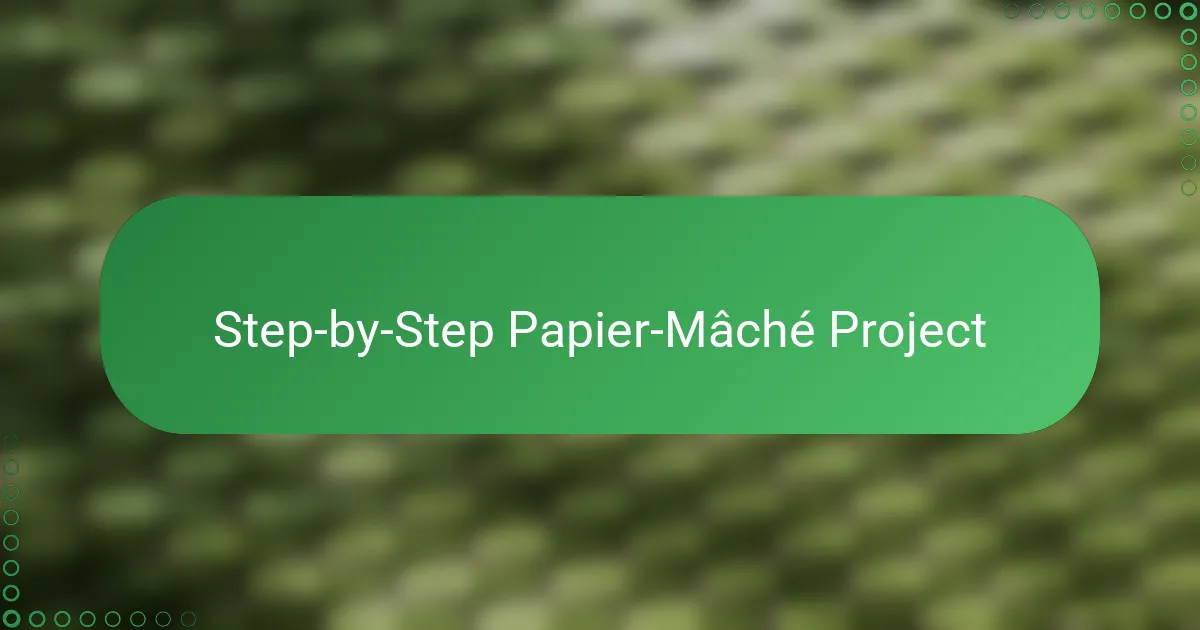
Step-by-Step Papier-Mâché Project
When I start a papier-mâché project, the very first step is creating a solid base or armature. I often use balloons, wire frames, or crumpled paper to build a rough shape that feels right in my hands. Have you ever been amazed at how something so simple becomes the skeleton of your entire sculpture?
Next comes layering the paper strips soaked in paste. I moisturize each piece just enough to make it pliable, then gently smooth it over the form. It’s funny how repetitive this process feels almost meditative, yet seeing the layers build up gives me such a rush of accomplishment. Have you ever found that moment when your object finally feels sturdy beneath your fingers?
Finally, drying is where patience truly pays off. I let each layer dry thoroughly before adding the next, even if it means waiting a little longer than I want. I recall one project collapsing because I got impatient—since then, I’ve learned that embracing the wait results in stronger, longer-lasting work. Isn’t there something satisfying about watching your creation slowly come to life, step by careful step?
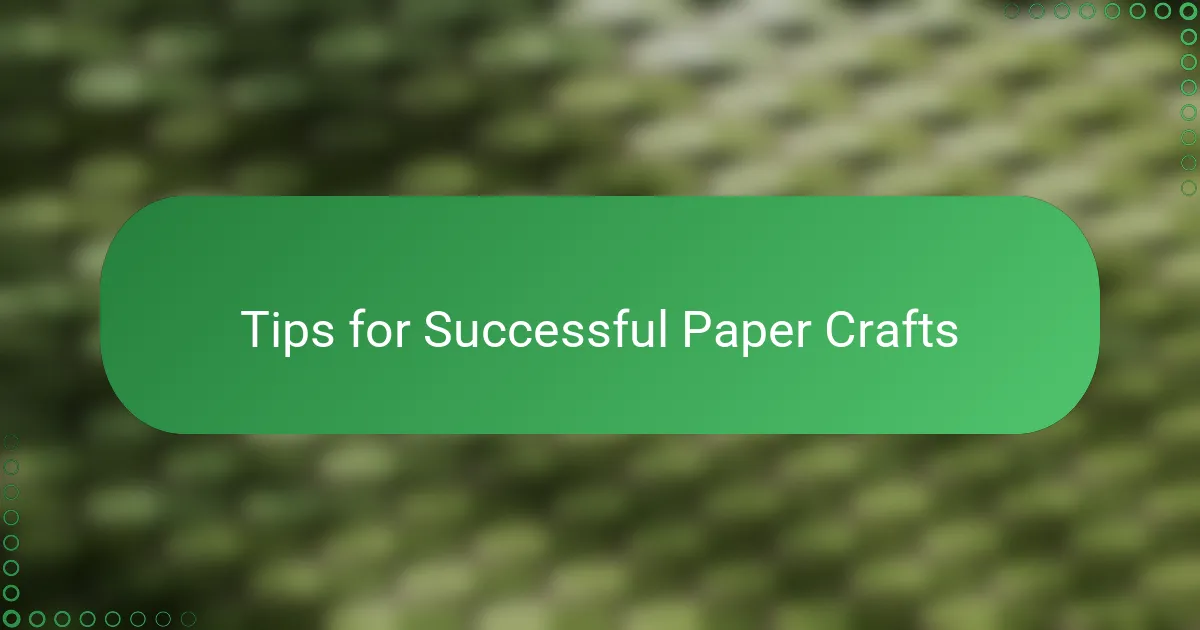
Tips for Successful Paper Crafts
A tip that’s saved me countless times is to always keep your hands and tools clean while working. I used to rush through projects and noticed how sticky paste would gum up my brushes or create unwanted lumps on my work. Have you ever experienced that frustrating moment when a smudge ruins your carefully laid paper? Taking a few seconds to wipe off excess paste can make your layers smooth and your final piece much neater.
Another thing I’ve learned is to trust the drying times, even when it tests my patience. There was this one time I peeled off my paper layers too soon, only to have the whole sculpture bend and sag. It taught me that patience isn’t just a virtue in papier-mâché—it’s essential. Have you ever battled impatience, only to realize waiting actually makes your craft stronger and more beautiful?
Lastly, don’t underestimate the power of good lighting. When I first started, poor lighting meant I missed spots or ended up with uneven layers. Bright, natural light helps me see every detail clearly, ensuring each strip is laid just right. Do you find that a well-lit workspace lifts your mood and sharpens your focus? For me, it’s like crafting with a little extra magic on my side.
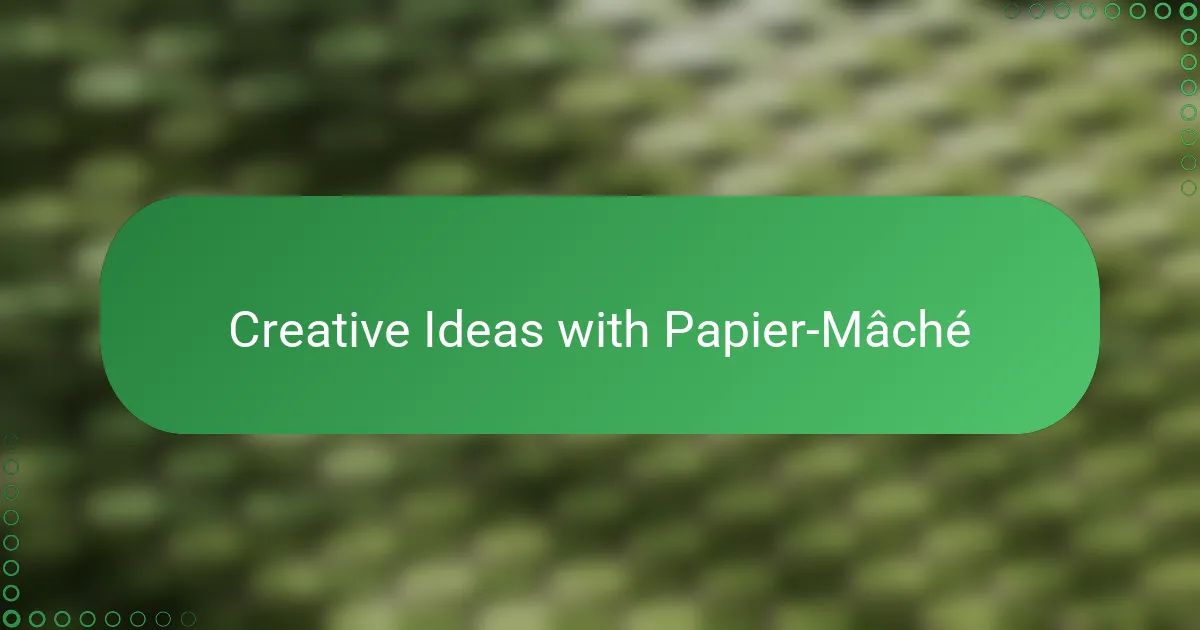
Creative Ideas with Papier-Mâché
When I think about creative ideas with papier-mâché, one thing that always comes to mind is making personalized masks. There’s something deeply satisfying about shaping a simple balloon into a face and watching it evolve into a vibrant, expressive mask with just paper and paint. Have you ever tried crafting a mask that captures a mood or character? The process feels like bringing a piece of imagination to life right in your hands.
Another favorite project of mine is creating decorative bowls or trays. It surprises me every time how layering paper over a simple cardboard or plastic form can produce such sturdy, functional pieces. I’ve made bowls for holding keys and jewelry, and each one has its own story in the way the patterns or colors emerge. Don’t you love when a craft item becomes both beautiful and useful around the house?
Sometimes, I enjoy exploring abstract sculptures by tearing paper into unpredictable shapes and layering them without a strict plan. This freeform approach always leads to unexpected textures and shapes that feel alive and unique. Have you ever embraced that messy phase where structure gives way to pure creativity? For me, those moments bring the most joy and playful discovery to papier-mâché crafting.
